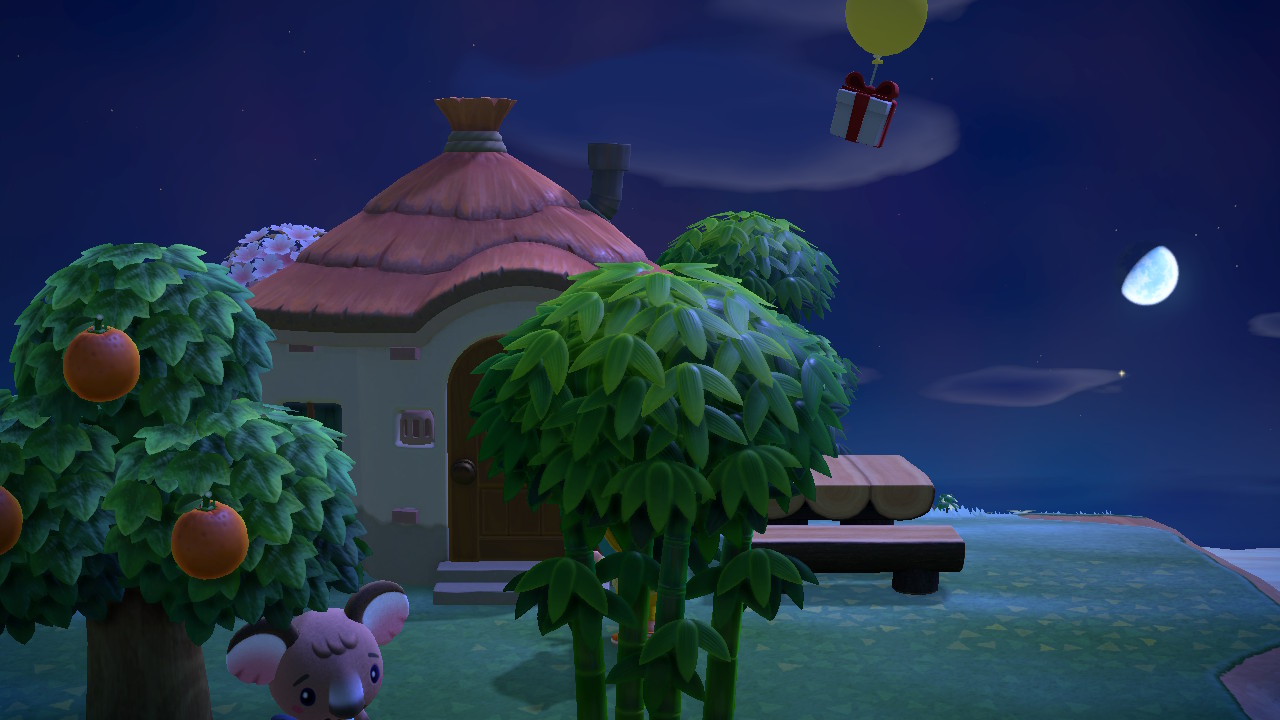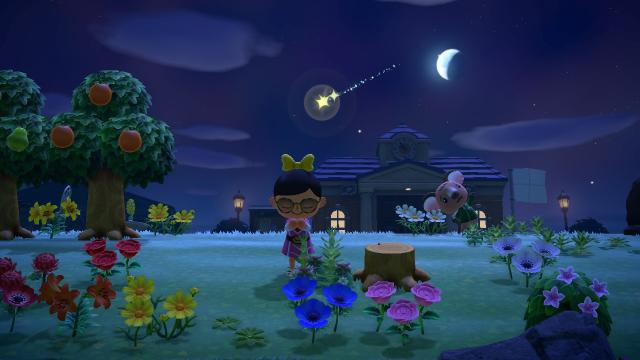“It turns out that Animal Crossing [New Horizons] is very, very blind-friendly,” says Ross Minor in the first of two videos he uploaded to YouTube this spring. In them, the blind athlete and YouTuber demonstrates how a combination of the game’s sound design, mechanics, and customisability enable him to enjoy the game in a way that doesn’t rely on sight.
“The reason why I’m so passionate about this is that it is very, very rare to find a new game that I’m able to play,” says Minor. He points out, for example, that the sound of your character’s footsteps stops if you are walking into an obstacle, which helps him navigate his island. Different kinds of trees make different noises, which allows players to tell which is which without needing to see them.
Nintendo has often been slow to implement accessibility features. The Switch only received button remapping in April of this year, a common feature on other consoles, and many of its first-party games lack robust accessibility settings, particularly when it comes to mandatory motion controls. New Horizons lacks an options menu with basic choices often found in other games, like brightness, sound level mixing, or a toggle for haptic feedback. In his review of New Horizons, legally blind writer Dominic Donegan notes that “settings like increased contrast, increased UI size, [and] magnification” could help many play the game.
In an email, Minor said Nintendo doesn’t seem to think about accessibility directly. Where Sony and Microsoft discuss their efforts to be inclusive, he’d like Nintendo to “acknowledge that accessibility exists” at all. But, he noted,“ironically, Nintendo games tend to be more accessible [than others].” This can be due to inherently simple controls in games, or certain Nintendo games’ customizability, which lets players find creative ways to play.
In New Horizons’ case, the game’s customisability allowed Minor to build his whole island to suit his needs. In his first video he’s already set up some guideposts, like noisy tiki torches that signal where the main square is. By the second video, posted for Global Accessibility Awareness Day, he shows the progress he’s made using paths, waterfalls, and other audible objects for making his town more accessible still for himself and visitors.
But some of the tricks he employs demonstrate the limits of the game’s accessibility. Many of the insects in the game don’t make noise, so the only way Minor can improve his chances of catching them is by planting flowers in an area near his house to encourage spawning. He also uses some external tools, particularly OCR (Optical Character Recognition) software, to listen to the game’s text.

Minor isn’t the only player finding workarounds. One low-vision player covered their island’s grassy areas in rainbows and flowers to force fossils and rocks to spawn in particular areas. Another player, Shannon Natale, set up a personalised sign for her legally blind aunt, who has over 500 hours in the game. The sign asks visitors to come close to her aunt’s character before using the chat function so that the messages would be centered in the most readable part of the screen — Natale’s aunt was concerned visitors would think she was rude if she missed their messages.
“By asking them to stand next to her before chatting, she can see the chats and respond. Now she feels more comfortable opening her gate up and allowing visitors and enjoys the game even more,” Natale explained over email.
Natale shared the download code for the sign designs on Reddit “just in case anyone else struggled with a similar issue and could use them.” She was “blown away” by the positive response, which included a comment from Minor. “I had seen his YouTube video of how he plays when searching for ideas for my aunt, [so] for me, that was like meeting a celebrity.”
“There were people wanting to add my aunt as a friend, and people who just sent a message thanking me for making the signs. There were messages from people that just wanted to share their experiences with overcoming a disability,” she said. She said some commenters didn’t understand “how a person with an impairment could play at all,” and that people answered each other’s questions, with “so many people explaining different conditions, how they affected them, and how they overcame the problems. People had tips to try to help make the game more accessible.”
Natale cautions that she’s not an expert in how Nintendo could improve in this area, but she does have some ideas. “The biggest thing I think Nintendo could do is to make [accessibility] more mainstream,” she says. “If more effort was put into not only creating accessibility features, but also promoting them, that would be the biggest improvement I can think of. My little signs show there is a large portion of the community that could use more accessibility features.”
Minor, similarly, told me that he’d like Nintendo to centre accessibility publicly. “There’s been a lot of accessibility efforts, discussions, and panels by Microsoft and somewhat Sony, but not at all Nintendo,” he says.

Many players have tried to get Nintendo’s attention around accessibility. In 2017, Waypoint reported on AJ Ryan, a disabled player who uses his feet to play rather than his hands. He struggled with certain Nintendo games because the Switch didn’t provide system-wide remappable controls, unlike the Xbox One and PlayStation 4. Ryan contacted Nintendo and received what he called a “patronising” response from Nintendo of America customer service.
A group of deaf and hard of hearing players has been petitioning the company since soon after Animal Crossing: New Horizons’ release over areas of the game that are primarily sound-based, such as mole crickets, balloons, and shooting stars. While players can see balloons and shooting stars if they get lucky, hearing players would usually rely on the sound cue. Mole crickets can only be found by sound. The petition calls for visual cues to be added to these features.
The petition’s creator, who goes by her first name, Mikaela, says she contacted Nintendo directly. “I got a response that they are working on it and that they would call me back after 1-2 weeks,” she told me via Twitter DM. “They never did and it has been more than 3 months.” So far there has been no change to the game. (Nintendo did not provide a comment in time for publication.)
“Nintendo has done a very good job overall in terms of hearing access,” deaf accessibility specialist Morgan Baker told me via Twitter DM. Still, she called out the aspects pointed out in the petition as “the most glaring inaccessible features.”
Baker said she buddies up with hearing players, who help her wish on shooting stars, for example. “It’s fun to meet others that way, but annoying that it is a necessity.” She said using other cues would remove that necessity, though how they’re implemented is another concern. She suggested vibrations might work, but noted that “the Switch Lite doesn’t have rumble support, which is a huge loss for deaf players. I can feel the difference between the vibration of my Nook Miles notification versus catching a fish, but on the Switch Lite, this is not the case.”
Baker recently worked as a consultant on The Last of Us Part II, which offers around 60 accessibility options thanks to the expertise of her and many others. She said for games to be truly accessible, developers need to think about accessibility early in the development process. “Oftentimes video games are inaccessible due to fundamental issues [in their design].” She said that Naughty Dog “brought in actual people with disabilities who have firsthand knowledge and experience.” As well as directly benefiting those people through providing work, this “emphasises the value of Own Voices consultation” — in other words, letting those with lived experience lead the conversation. “I truly hope this will be common practice for future AAA titles,” said Baker.
In the meantime, players are figuring out their own workarounds. New Horizons’ customizability has allowed it to become a leading example, but it clearly demonstrates the limitations of putting the burden on players. Minor’s fully customised island still demonstrates obvious omissions for him, and other issues like the mole crickets can’t be sidestepped by fancy exterior design. Ultimately, these things need attention from Nintendo to be truly accessible.

Leave a Reply